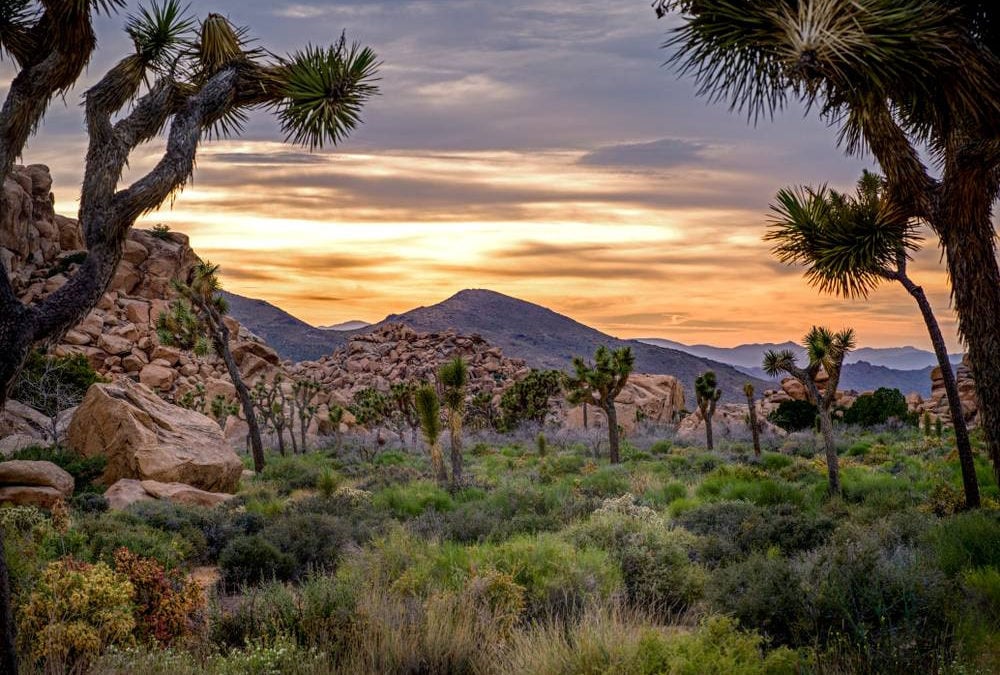Mojave National Preserve

Let’s explore a hidden gem! Mojave National Preserve is a tourist destination teeming with wildlife & limitless exploration activities. Featuring the iconic 600 foot-tall Kelso Dunes and beautiful wildflower blooms in the late spring, Mojave is quietly one of the most diverse destinations for experienced travelers and families alike. The recently renovated Kelso Visitor Center is an ideal first stop for any first-time visitors to the area, as it boasts several desert ecology exhibits to help familiarize patrons with the preserve. Additionally, visitors will be debriefed by park staff about precautions to take before embarking on a journey through the preserve.
Cautions for Visiting Mojave National Preserve
Before visiting, it’s important to be aware of these three facts: cell phone service is not reliable in the preserve, there are zero gas stations on the premises, and it is the 3rd largest area in the United States National Park System. So, what does this mean? FUEL UP! Tourists are notorious for stranding themselves in the middle of the preserve, and this can be extremely dangerous. The bottom line: Make sure you have a plan and know your limits.
As you explore the preserve, it’s important to be respectful to the animals, and not just for their sake. There are several poisonous species of reptiles like the endangered Gila Monsters as well as rattlesnakes (watch out for the Mojave Green Snake) which inhabit the region. However, most of these species (such as Mr. Gila) are nocturnal and non-aggressive. It is recommended that parties do not travel through the preserve after dusk.
A Little Natural History
Mojave National Preserve was originally developed to protect the unique ecology of Mojave. Cima Dome, famous for its remarkably smooth dome shape, rises over 1500 feet above the surrounding desert and is home to the largest Joshua Tree forest in the world. The infamous California wildfires continue to affect the area, however, and in 2020 over a quarter of this ancient forest was burned away. This is why it is important to focus upon new methods of preservation.
Environmental consulting firms have begun specializing in the research and development of these new procedures to allow for forest re-growth and endangered species like the Black-Tailed Jackrabbit and Desert Tortoises to repopulate. Ecological restoration is a valiant cause that should be on every visitor’s mind as they explore the natural wonders of the preserve.
Hiking in Mojave National Preserve
We’ve highlighted a few “must-see” attractions from the National Park Service below:
Kelso Dunes
Trailhead: 3 miles west of Kelbaker Road on the Kelso Dunes Road.
This trail is easily the most popular at Mojave Natural Preserve, and for good reason. There is a clearly marked trail for about 50% of the journey, but after that you’ll be walking through sand, with the breeze erasing your footsteps soon after you make them. The roughly 3-mile round-trip hike is difficult, but most say the sweeping views at the top are worth the struggle. Total elevation gain is about 600 feet. This hike is not recommended during the summer.
Teutonia Peak Trail
Trailhead: 12 miles south of I-15, or 5 miles north of Cima, Calif. on Cima Road.
Eerie Joshua tree skeletons beckon en route to a rocky peak with expansive views of Cima Dome and beyond. This area burned as part of the August 2020 Dome Fire. The trail also goes through large patches of desert greenery that were untouched by the fire. Three miles round-trip.
Caruthers Canyon
Start: Primitive campsites in Caruthers Canyon, 5.5 miles west of Ivanpah Road on New York Mountains Road, then 2.7 miles north on an unsigned road. High clearance and four-wheel drive recommended. Hike 3 miles one way through one of the Mojave’s most botanically diverse areas: conifers, oaks, and coastal chaparral plants including manzanita, yerba santa, ceanothus, and coffee berry decorate this route.

a venue for infrastructure industry meetings, trainings and public notice hearings for development projects.
The wildlife rehab center will partner with veterinary students to provide a real-life training for clinics, and will be a free venue for
schools and the community featuring STEM exhibits and energy efficient architectural features.





Recent Comments